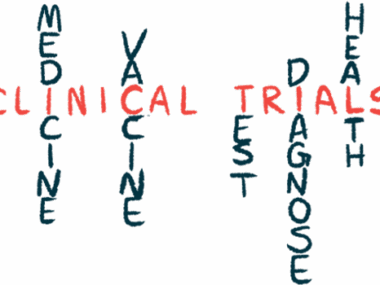Pulmonary sarcoidosis follows COVID-19 infection for man, 26
Case report 'emphasizes' possible COVID-19 link to autoimmune conditions
Written by |

A 26-year-old man in Nepal developed pulmonary sarcoidosis after a mild COVID-19 infection, per a new case report that suggests “sarcoidosis as a potential complication of COVID-19,” according to researchers.
The man was initially diagnosed with post-COVID fibrosis, or thickening and scarring of lung tissue following a COVID-19 infection. However, after not improving for three months, clinicians performed additional tests and confirmed his lingering symptoms — including shortness of breath, repeated fevers, and weight loss — were due to sarcoidosis.
“This case report emphasizes the potential link between COVID-19 and autoimmune conditions like sarcoidosis, highlighting the need for a comprehensive diagnostic approach and long-term observation to distinguish between sarcoidosis and post-COVID fibrosis,” the researchers wrote.
The report, titled “Sarcoidosis in a young adult: A rare sequelae of COVID-19 infection,” was published in Clinical Case Reports.
Symptoms of COVID-19 infection continued despite treatment
An autoimmune disease, sarcoidosis is characterized by an overactive immune system that causes granulomas, or small clumps of inflammatory cells, to form on different tissues and organs.
Sarcoidosis can be triggered by viral, bacterial, and fungal infections. During an infection, the immune system sometimes forms granulomas to surround the threat to the body so the clump of immune cells can destroy it later. In most people, these granulomas naturally go away once the infection is gone. However, when they are long-term, they can cause serious, permanent damage to organs.
In about 90% of cases, patients exhibit some level of pulmonary sarcoidosis, marked by the formation of granulomas on the lungs. These granulomas negatively impact lung function, causing symptoms like shortness of breath, coughing, chest pains, and wheezing. Granulomas can also lead to long-term lung scarring, also known as fibrosis, in which the lung tissue becomes stiff and thick, making it difficult for patients to breathe and reducing the amount of air the lungs can hold.
Infections with COVID-19, caused by the SARS-CoV-2 coronavirus that spread worldwide, can lead to many upper respiratory symptoms, including coughing and shortness of breath. In about 7% of cases, COVID-19 patients will also develop lung fibrosis.
Now, a team led by a researcher at the Nepalese Army Institute of Health Sciences College of Medicine described the case of a young man who had a five-day infection with COVID-19, exhibiting mild symptoms like coughing, fever, sore throat, and muscle soreness.
The man’s fever and cough did not go away, and one month after his initial COVID-19 infection he returned to the clinic. At that time, he tested negative for COVID-19, but his chest X-ray showed signs of lung inflammation and scarring.
He was preliminarily diagnosed with post-COVID fibrosis and prescribed a corticosteroid and a bronchodilator to help reduce inflammation and relax the muscles in the airways.
Further research needed to better understand disease links
Despite treatment with those medications, however, the man’s symptoms lingered, leading him to seek medical care again three months after the initial COVID-19 infection. He reported symptoms like low-grade fevers, coughing, shortness of breath with physical activity, and weight loss.
Doctors did additional imaging of the man’s lungs, revealing multiple abnormalities. These included larger than normal lymph nodes, clumps of immune cells, and thickening of the connective tissue around the lung’s blood vessels and bronchi, the airways that lead from the windpipe to a lung.
After ruling out tuberculosis, the doctors analyzed biopsies obtained from the patient’s lymph nodes within the lungs, confirming the presence of granulomas. This led to a confirmed diagnosis of pulmonary sarcoidosis.
“Distinguishing between COVID-19 and sarcoidosis based on clinical and imaging features can be difficult due to significant overlap,” the researchers wrote. “Therefore, for symptomatic patients, obtaining a [biopsy-based] diagnosis of sarcoidosis is crucial to initiate early treatment.”
This case report emphasizes that sarcoidosis like many autoimmune conditions arises due to immune system dysfunction following COVID-19 infection.
The patient’s previous treatment regimen was increased. When his cough worsened, the man was temporarily given the oral steroid prednisone until his cough went away.
At the time of the study’s publication, the patient did not have any sarcoidosis-related symptoms nor was taking any medications. He now has regular follow-up appointments every three months.
“This case report emphasizes that sarcoidosis like many autoimmune conditions arises due to immune system dysfunction following COVID-19 infection,” the researchers wrote.
Additional study is needed to learn more, per the researchers.
“Further research and extended follow-up are necessary to clarify these associations and understand the underlying mechanisms comprehensively,” the team concluded.







